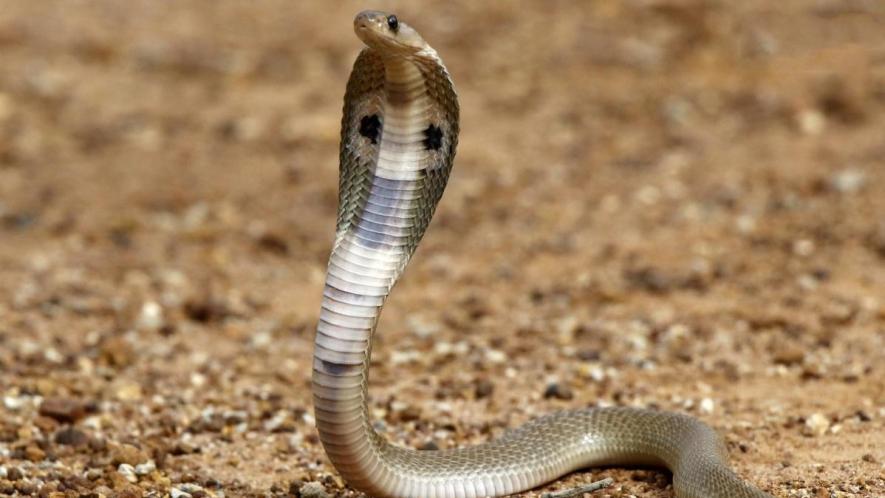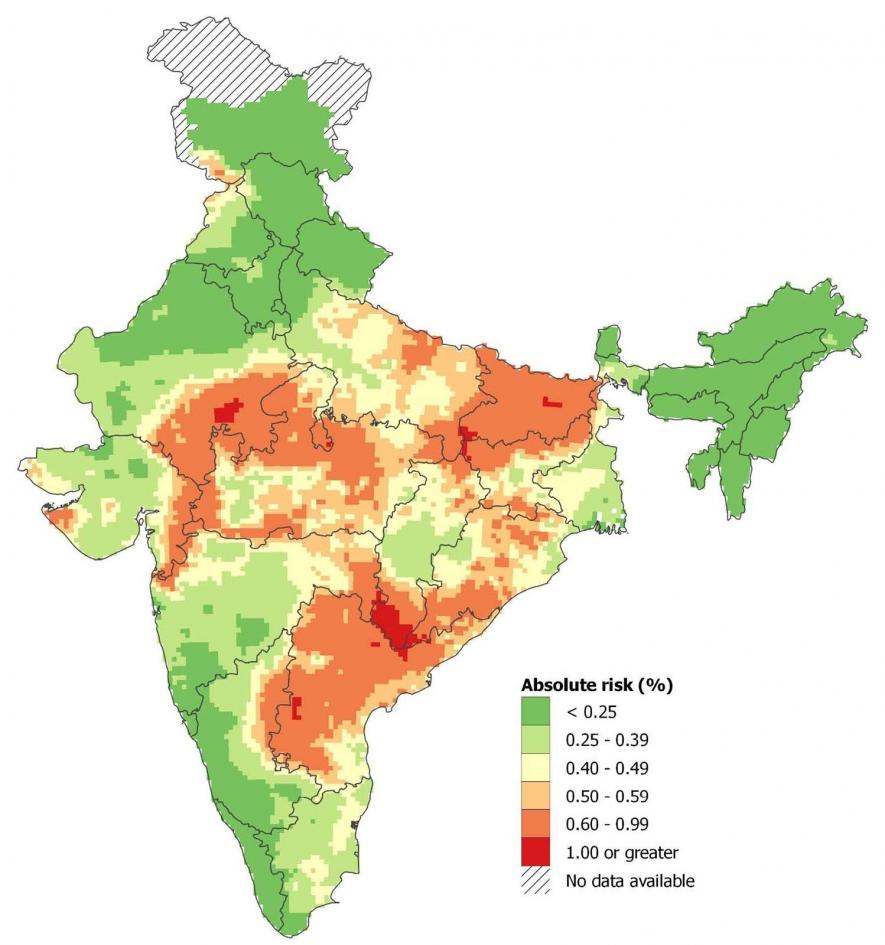58,000 Snakebite Deaths Occur in India Every Year, Says Study

Representational image. | Image Courtesy: Deccan Herald
A new study published on July 7 in eLife, conducted by the Centre for Global Health Research (CGHR), at the University of Toronto, Canada, with Indian and UK partners, has found that the number of snakebite deaths over the past two decades in India far exceeds previous estimates. In the largest ever nationally representative mortality survey to include snakebites, published in 2011, researchers of the Million Death Study (MDS) estimated 46,000 annual snakebite deaths in India.
The new study expands the results of the 2011 study by adding 11 more years of field data from the MDS, covering 600,000 randomly selected deaths, and a systematic review of 78 Indian snakebite studies. To derive comprehensive and up-to-date estimates of snakebite mortality and prevalence, the researchers collected all possible statistics related to snakebites in India from 2000 to 2015. The main data sources for this study were snakebite mortality data from the Indian Million Death Study (MDS), a systematic review of studies published in the scientific literature, and chronological statistics published by the Ministry of Health and Family Welfare of the Government of India.
It reports a staggering 1.2 million snakebite deaths in India during the 20-year period, from 2000 to 2019, an average of 58,000 per year. Around 70% of these deaths occurred in limited low altitude, rural areas of eight states - Bihar, Jharkhand, Madhya Pradesh, Odisha, Uttar Pradesh, Andhra Pradesh (including Telangana), Rajasthan and Gujarat. Half of all deaths occurred during the monsoon period between June to September. Available data indicated that most envenomations were due to Russell’s vipers followed by kraits and cobras.

Spatial distribution of snakebite mortality risk in India for 2004-13
The senior author Professor Prabhat Jha, Director of CGHR at Unity Health Toronto, said in a statement, “Our study directly quantified and identified the populations most affected by fatal snakebites in India. We showed that the overall lifetime risk of being killed by snakebite is about 1 in 250, but in some areas, the lifetime risk reaches 1 in 100.”
According to the study, the Government of India relies on reporting via public hospitals to track snakebites and death. The researchers examined the total bites and deaths available from 2003 to 2015 in government hospitals and compared these deaths to the MDS in-hospital deaths. Over this 13-year period, the MDS estimated about 1,54,000 snakebite deaths in public and private hospitals, and the government reported 15,500 deaths in hospitals, meaning that the routine reporting system captured only 10% of the expected hospital-based deaths. The most complete reporting was in Karnataka which captured 26% of expected hospital snakebite deaths.
The study says, “To repair this gross under-reporting, the authors recommend that the Government of India designate and enforce snakebite as a ‘Notifiable Disease’ within the Integrated Disease Surveillance Program. Accurate snakebite data are essential if the Government of India’s strategies to reduce snakebite deaths are to succeed.”
It also says that targeting certain areas with education about simple methods, such as ‘snake-safe’ harvest practices, wearing rubber boots and gloves, and using rechargeable torches or mobile phone flashlights, could reduce the risk of snakebites. Mass distribution of mosquito nets, which also protect against scorpion sting and mosquito-borne and sand fly-borne diseases, may also help.
The study points out that India has sufficient manufacturing capacity to produce large volumes of antivenom. “Better understanding of the distribution of India’s many venomous snake species could help in the design and development of more appropriate antivenoms. The current Indian antivenoms neutralize venom from only spectacled cobra (there are three other Indian cobra species), common krait (there are seven other krait species), Russell’s viper and saw-scaled viper. At least 12 other species that are not covered by current antivenoms are known to have caused fatal bites in India. Only in some states do emergency ambulance services equip vehicles with lifesaving equipment and drugs, including antivenom,” it said. It added that improved data, focused prevention, and antivenom treatment could help India to achieve WHO’s goal of halving snakebite death and disability rates by 2030.
Also read: Imponderables Mark Start of Jute Year, Rise in Mills’ Capacity Use a Silver Lining
Get the latest reports & analysis with people's perspective on Protests, movements & deep analytical videos, discussions of the current affairs in your Telegram app. Subscribe to NewsClick's Telegram channel & get Real-Time updates on stories, as they get published on our website.














